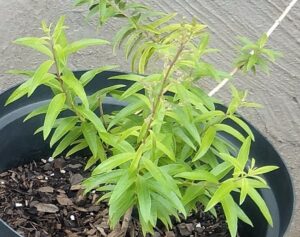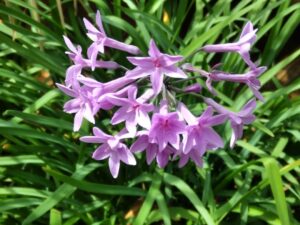Society garlic is a beautiful and fragrant plant that can add color and flavor to your garden or home. It’s not real garlic, but it smells and tastes like one, which makes it an excellent substitute for the regular vegetable in cooking. The plant is also easy to grow and can handle various conditions and resist pests and diseases.

Lemon Verbena
Lemon verbena is a herb with a refreshing lemon-like aroma and flavor. It’s native to South America but has been



